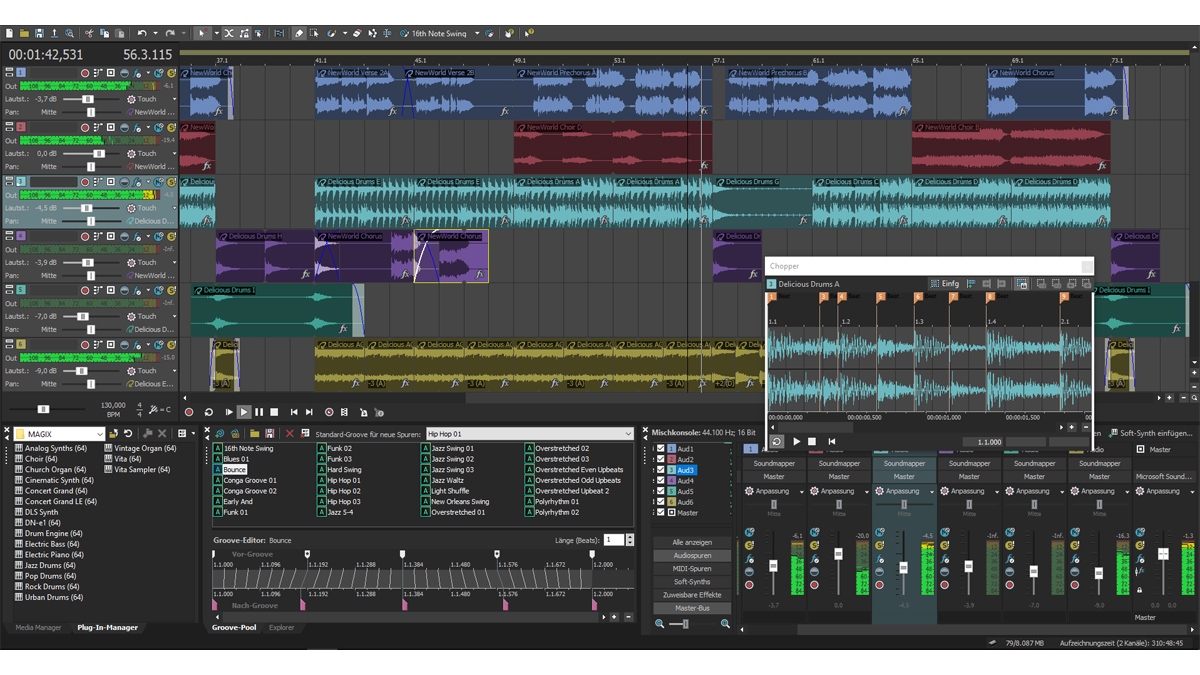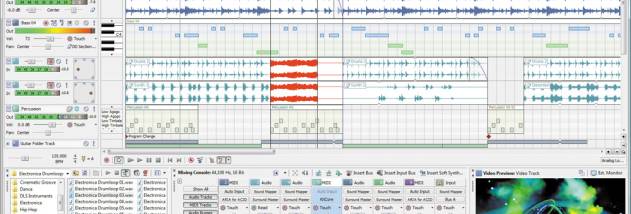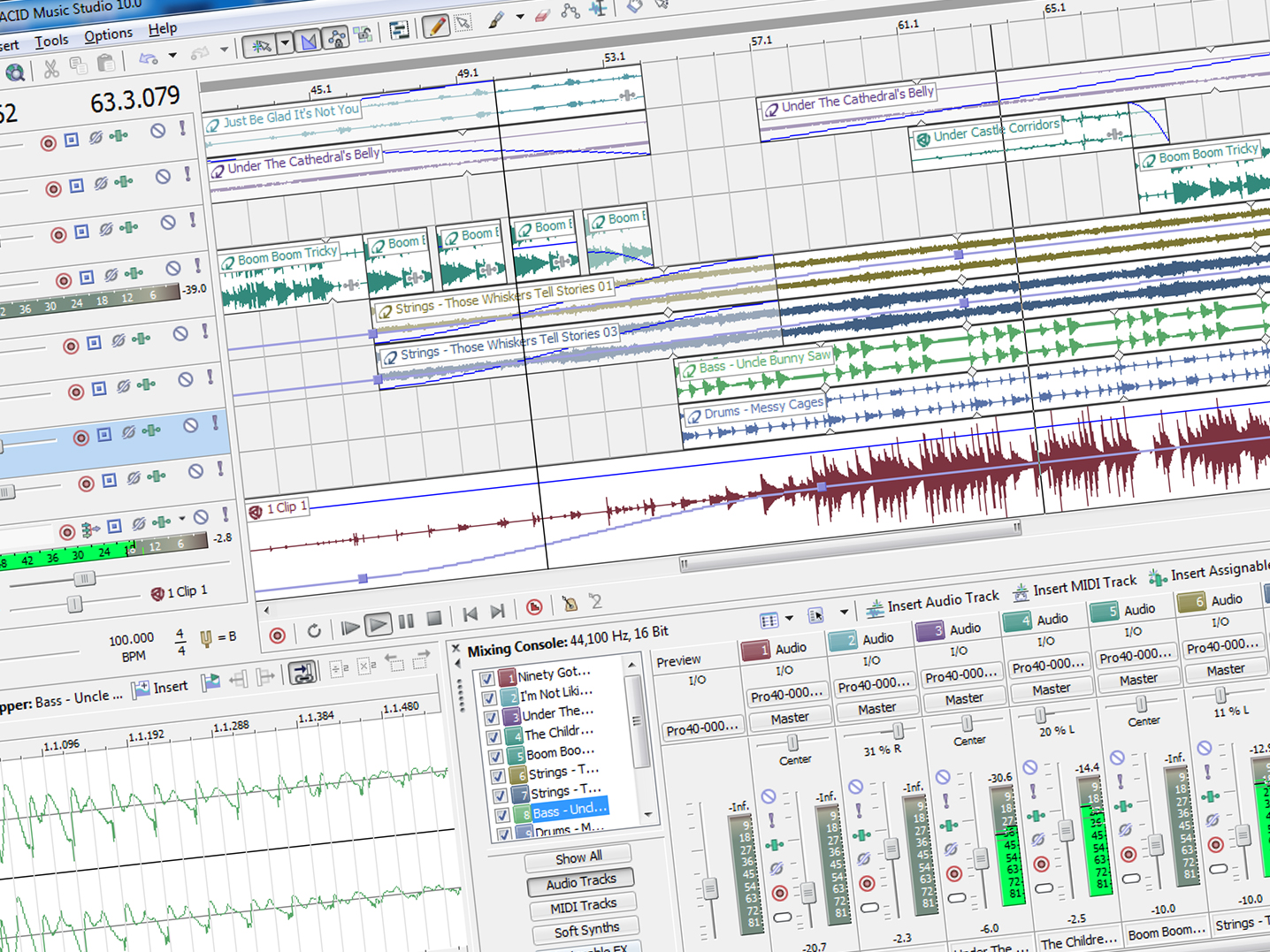Increase your latency settings
From the Options menu, choose Preferences. The Preferences dialog is displayed.
Select the Audio Device tab and click the Advanced button. The Advanced Audio Configuration dialog is displayed.
Select the ASIO driver tab and click the Configure button to display the configuration applet from your hardware manufacturer.
Type a new latency value, apply the change, and close the configuration applet to return to the Advanced Audio Configuration dialog.
Click the Apply button in the Advanced Audio Configuration dialog.
Trusted Windows (PC) download Sony ACID Pro 7.0.536. Virus-free and 100% clean download. Get Sony ACID Pro alternative downloads. 29 Jun 2010 Sony Creative Software updates ACID Pro to v7.0e 17 Feb 2010 Sony Creative Software updates ACID Pro to v7.0d 13 Jan 2010 Sony Creative Software updates ACID Pro to v7.0c 14 Apr 2009 Sony updates ACID Pro to v7.0b 18 Mar 2009 Sony revamps ACIDplanet.com and releases ACID Xpress 7 15 Jan 2009 Sony Creative Software updates ACID Pro. MAGIX ACID Pro 8 Crack v8.0.5 Incl.Emulator for free. download full VERSION is a very powerful 64-bit DAW that features ACID's famous innovative audio looping technology, powerful multitrack recording and hi-end audio and MIDI features - all set within an easy-to-use interface to help artists of all levels bring their musical aspirations into reality. ACID Pro 8 sets new standards in music editing with this one-of-a-kind combination of loop-based music production with the same features of a fully equipped digital audio workstation. With a powerful audio engine, high-quality loops and sophisticated virtual instruments, this revolutionary music software makes everything possible and lets users. From the Options menu, choose Preferences, and then click the Audio Device tab. Click the Advanced button to display the Advanced Audio Configuration dialog for your sound card. Adjust your buffer size until playback is responsive and clear. For wave devices, try raising and lowering from the default settings until you find the sweet spot.
Turn off other audio devices
You can only use a single ASIO driver at a time, and some ASIO drivers can conflict with other audio driver models (such as WDM and wave drivers).

Getting your computer to play back a complex project can be a bit like walking a tightrope: there’s a delicate balance between responsive playback and glitch-free playback. The trick is finding the sweet spot for your hardware.
For more information about setting advanced audio preferences, click here.
From the Options menu, choose Preferences, and then click the Audio Device tab.
Click the Advanced button to display the Advanced Audio Configuration dialog for your sound card.
Adjust your buffer size until playback is responsive and clear.
For wave devices, try raising and lowering from the default settings until you find the sweet spot. Use the Buffer size drop-down list to choose a buffer size in samples, or choose MME to use the Playback buffering setting on the Audio Device tab in the Preferences dialog. You can also try increasing the Audio buffers setting to increase the number of buffers created. As a last resort, choose Time Critical from the Priority drop-down list.
For ASIO devices, start with a setting of 2048 samples. If playback is glitch free, you can try decreasing the setting. If you hear glitches, you may need to raise the setting.
Higher sample rates (and bit depths) may require a larger buffer because more data is being put through your device per buffer.
Turn on real-time MIDI monitoring
If you have a MIDI track routed to an external MIDI device, real-time MIDI monitoring must be enabled to allow ACID software to communicate with the MIDI port.
Real-time MIDI monitoring is enabled by default, but if you’ve turned it off, you can turn it on again by choosing Enable Real-Time MIDI from the Options menu.
When the Enable Real-Time MIDI command is selected, audio plug-ins continue running even when playback is stopped. Turning the command off can conserve processing power, but input from external MIDI controllers will be ignored.
Enable the VST instrument
If you’re using a VST instrument, select the Enable button in the Soft Synth Properties window to hear its output.
Sony Acid Pro 8 free. download full
Try a different soft synth

Unfortunately, some soft synths work better than others. Try routing your soft synth to a different DLS set or VST instrument.
ASIO sound drivers can cause conflicts with the Microsoft GS Wavetable Synth. To play your project, choose a different device for MIDI playback and verify that no other application is trying to use non-ASIO drivers.
Unfortunately, there is no standard way for a DirectX host application to determine whether a plug-in is automatable. For this reason, the application does not check a plug-in until you try to use it (just think of the time we’re saving you at startup).
After you use a plug-in, the application can determine whether it is automatable and it will appear in the correct folder in the Plug-In Chooser and will be indicated by the icon if it is automatable.

Adjusting these settings can resolve issues with some specific VSTi plug-ins. These settings will vary with your specific configuration and can be modified via the Windows Registry.
Incorrectly modifying the registry can degrade performance or cause serious problems with your operating system. If you’re uncertain how to change these settings, please use the defaults.

Start the Windows Registry Editor.
Browse to the key [HKEY_CURRENT_USERSoftwareSony Creative SoftwareACID Pro7.0MetricsVSTi Synth].
Edit the appropriate DWORD value:
DWORD
Default Value
Explanation
FlushOnStopCount
00000000
Some VST instruments (such as FruityLoops) do not flush their buffers on close and will output these buffers the next time you play or render your project. Entering a value in theFlushOnStopCountDWORD allows you to flush up to 500 buffers of audio.
FrameSize
00000006
Frame size defaults to 6 ms, but can be set as high as 2000 ms. This should rarely need to be modified.
Both of these settings apply to playback, seeking, and rendering. Excessively high values can cause latency that can appear as an application crash. For example, if you set your buffer size to 2000 ms and set ACID software to flush 500 buffers, you’ll create a 1000 second hang on every stop, seek, or render.
If you have a MIDI port configured in both ACID software and a ReWire client application, they will conflict when both applications try to access them at the same time.
If you want to use the MIDI port to play synths within a ReWire client, clear the port’s check box in the Make these devices available for MIDI track playback and Generate MIDI clock section of MIDI tab in the Preferences dialog.
If you want to use your MIDI port in ACID software, make sure your ReWire client is not configured to use the port.
We’re here for you. . . really. This topic is meant to help you get over those annoying little hurdles that are keeping you from doing what you really want to do: get back to creating some great music with ACID software.